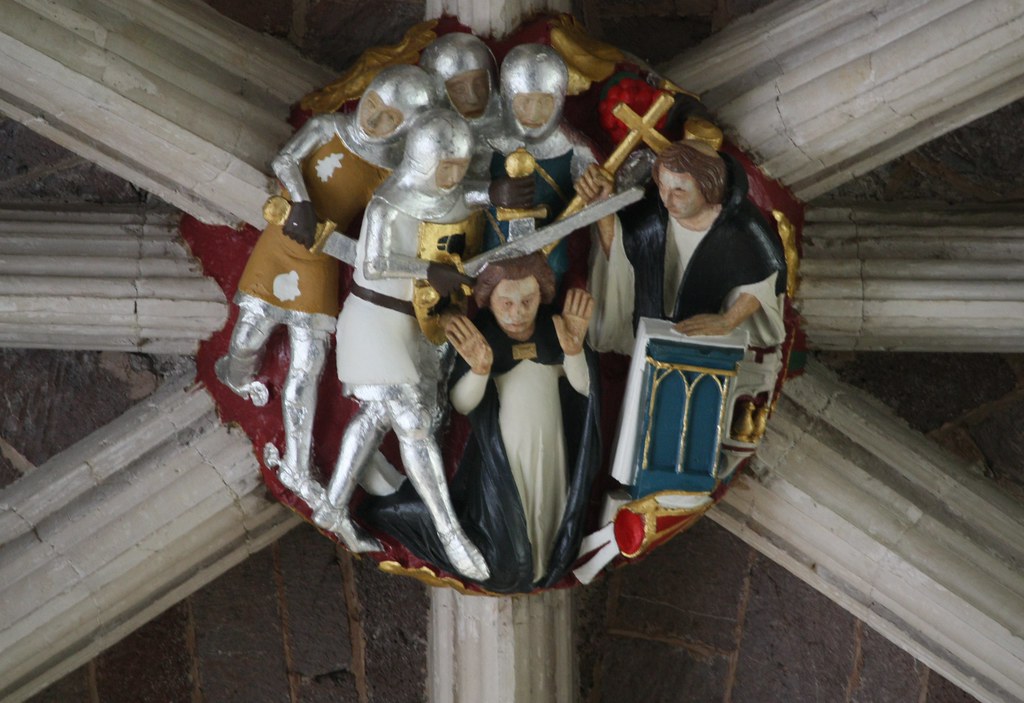
Posted by James Gordon Clark
12 July 2019Tuesday 16 July 2019 marks the 650th anniversary of the death of John Grandisson (1292-1369), Exeter’s longest-serving bishop. The cathedral and the diocese have been shaped by many hands over many centuries but arguably it is Grandisson, who led the diocese for forty-two years from 1327, whose imprint has proved the most enduring.
Before his tenure, Exeter was seen as something of a poor relation among the cathedrals of medieval England. When he arrived the cathedral church itself was unfinished, building work having stalled repeatedly due to the shortage of funds. By the time of his death, its appearance, and its reputation, were transformed. Exeter Cathedral had become a beacon for worship in the west of England, and the cultural and creative centre-point of the city, county and diocese.
Grandisson was born to be a leading figure in public life. His family were aristocrats from Herefordshire with blood ties to many of England’s greatest noble dynasties; they could even claim a connection with the Plantagenet royal family. His background would have ensured his rise to the top in any walk of life but as a boy John was recognised for his intellectual talents and he was sent to study at Oxford and Paris, then the most prestigious university in Latin Europe. At Paris Grandisson came under the influence of one of the leading minds of the time, Jacques Fournier, whose own career as a churchman was one of the most significant of the age, leading the battle against the notorious Cathar heretics and culminating in his election as Pope Benedict XII in 1334.
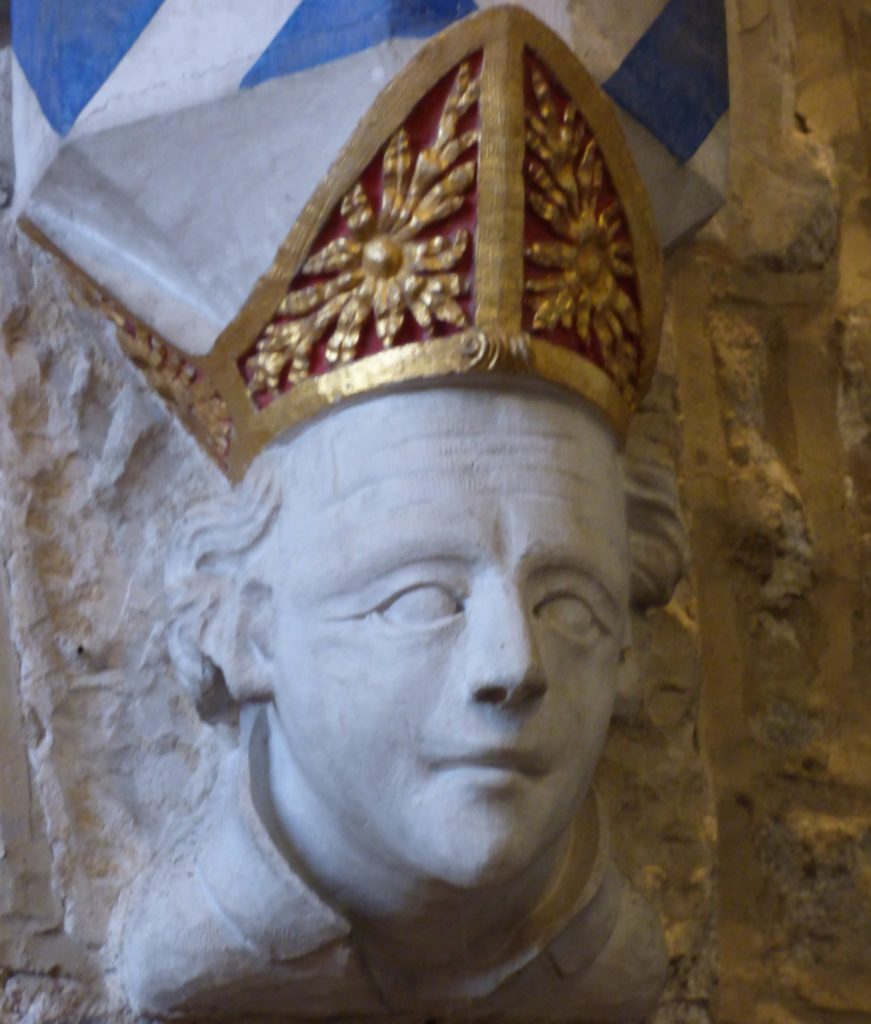
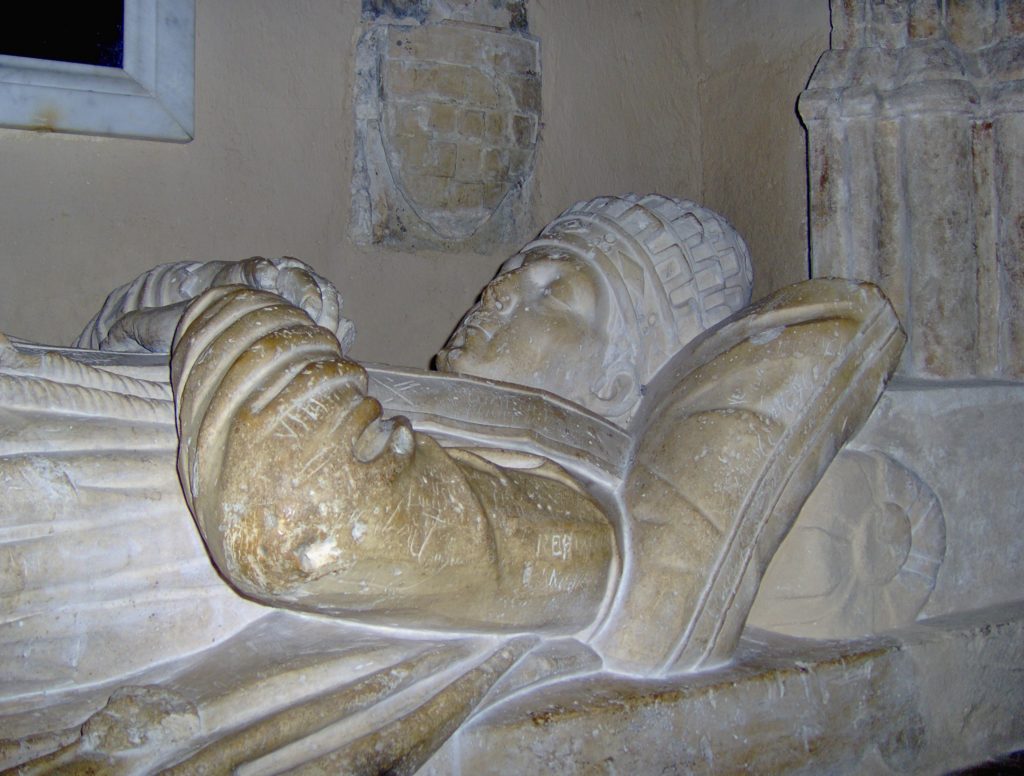
From university John moved on to the city of Avignon in southern France, then the capital of the Roman papacy. He was set fair for a career in the papal court but his talents marked him out as a potential leader of the church in England and in 1327 Pope John XII appointed him to the bishopric in Exeter. It was something of a back-handed compliment: his predecessor, Walter de Stapledon had just been murdered by a London mob leading an uprising against the government of King Edward II (1307-27). Exeter was well-known for its poverty, the poor state of its buildings, and its remote position at the outer reaches of the realm. It was a far cry from the cultivated world of princes and prelates Grandisson had known all his life. ‘I find myself not only at the ends of the earth’, he wrote, ‘but in the very end of the ends thereof’.
Grandisson’s first priority was to finish the cathedral church. Making use of materials which had been stockpiled, he oversaw the completion of the nave, including the vaulted ceiling with its bosses carved with vivid images still in situ today. He also added new features which had not been envisaged by his predecessors, probably the Minstrels’ Gallery on the nave’s north wall, and a chantry chapel which he intended for his own tomb.
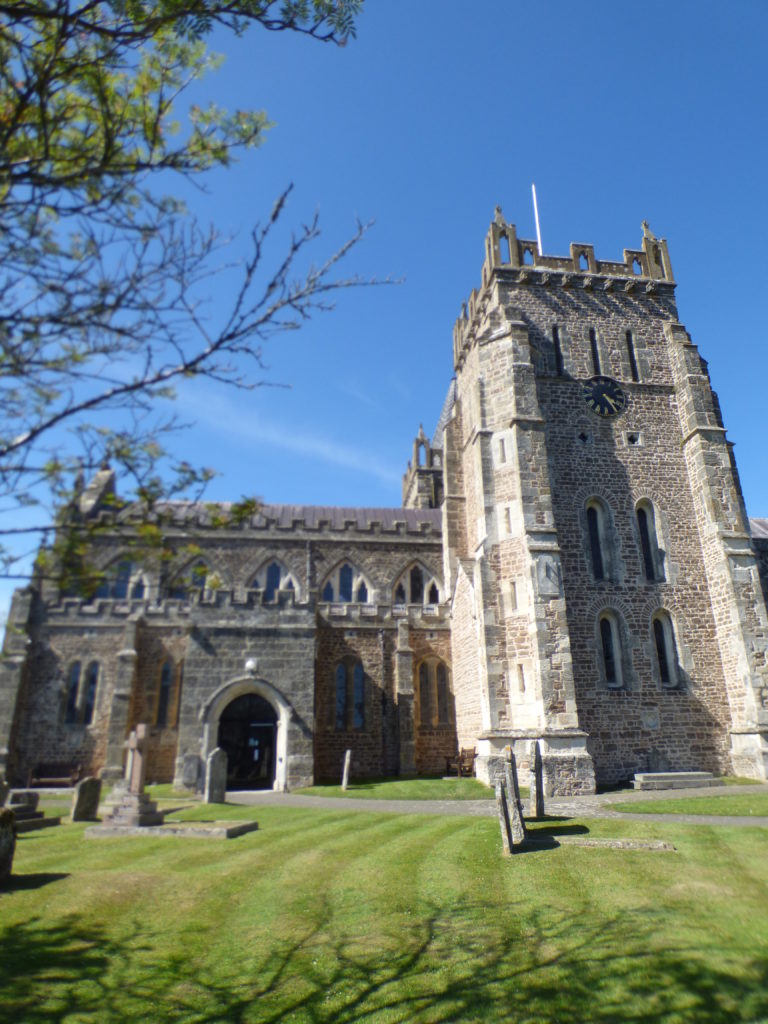
Grandisson not only completed the cathedral church but also invested in a dramatic re-development of the church of St Mary at Ottery, turning it into a collegiate church. Just about a dozen miles east of Exeter, Grandisson made Ottery St Mary a grand gateway to his diocese. His mitred head can still be seen on a corbel stone at one end of a nave arch.
Grandisson also invested in the working life of the cathedral. He provided books for the use of the cathedral canons, liturgy and music to assist them in their worship and learned texts of theology, canon law and science to ensure they could meet the demands of their ministry in the city and diocese. The books were placed in a purpose-built library, the first in the cathedral’s history, and perhaps the first in the west of England – it was another hundred years before there was a library at Wells Cathedral in Somerset.
Grandisson’s cosmopolitan early years had given him a love of stylish furnishings and during his career at Exeter he commissioned many remarkable artworks. An ivory diptych now in the collection of the British Museum depicts a finely carved images of the crucified Christ and the Blessed Virgin Mary.
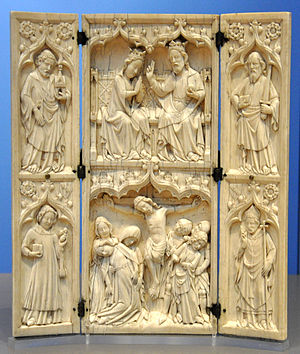
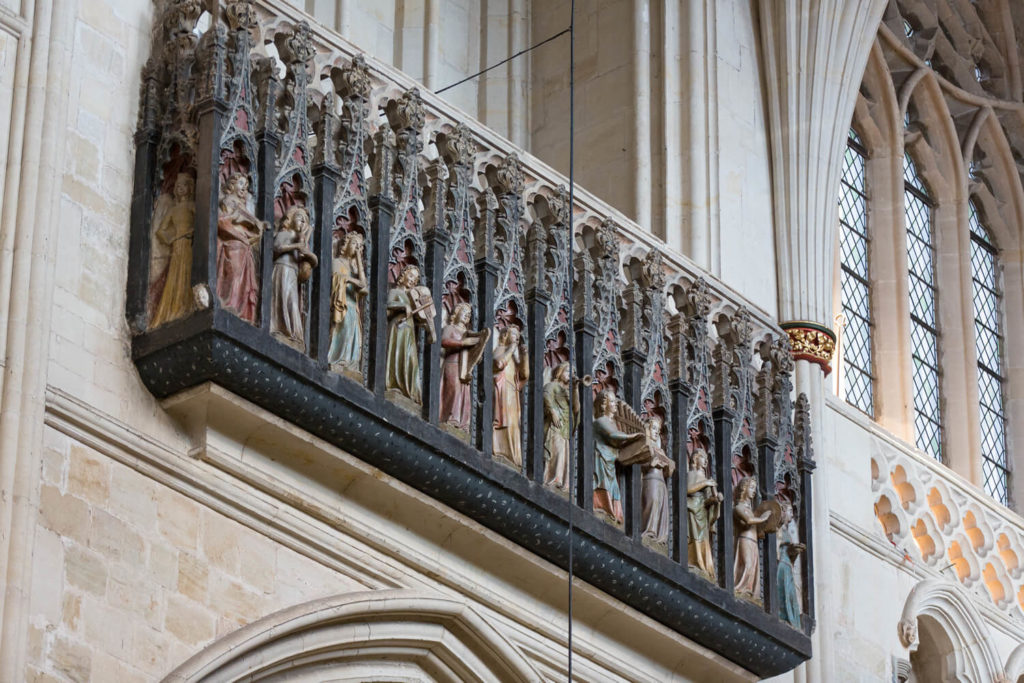
An exceptional set of Mass vestments were made for him: an orphrey, an ornamental border cloth, now in the Victoria & Albert Museum in London and a chasuble, now kept in the museum of the church of St Sebastian at Ponta Delgada in the Azores display some of the very finest embroidery in gold and silver-gilt thread, known as Opus Anglicanum or English work because the skill was unmatched anywhere in Europe.
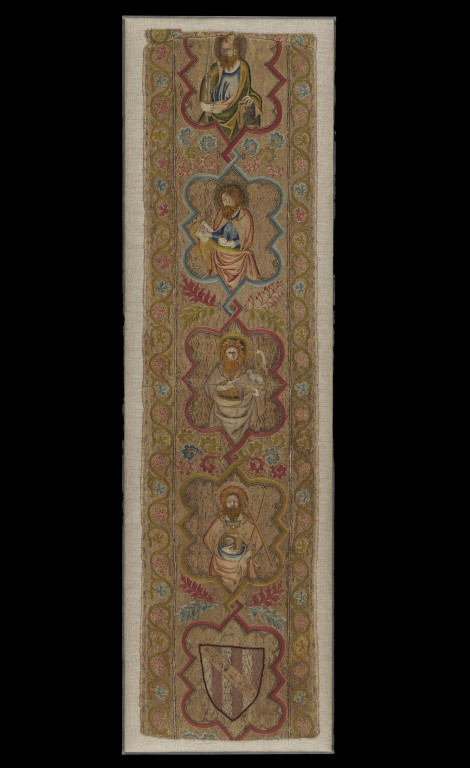
More important than building work or the furnishings, Bishop John applied his genius to the practice of worship in the cathedral. He was fascinated by the long history of the church and the lives of the saints whose feast-days filled the calendar. He made his own collection of these histories to be used in the cathedral, finely copied in a folio manuscript which is still kept in the Library & Archives. The life-story that fascinated him most was that of Thomas Becket, archbishop of Canterbury under Henry II (1162-70), whose determination to keep the church independent from the king and his government led to a long dispute, exile and finally roused four of Henry’s knights to murder him in his cathedral. Becket had turned his back on his career as a courtier, its privilege and political influence, and committed himself to his church and the people it served. For Grandisson he was the perfect role model.

Grandisson was also interested in the sight and sound of worship. He created a new Ordinal for the Cathedral, that is the manual that set out how the clergy were to process, where they were to stand, and what parts of the liturgy were to be spoken and sung. Today, the Cathedral Choir still turns to Grandisson’s guidance for the Christmas Eve service that carries his name.
At 5.30pm on 16 July Exeter Cathedral will perform a requiem mass in honour of their great bishop. In the following months further events will recall his contributions in different dimensions of church life including decorative art, the customs of worship in liturgy and music and education, learning and the making of books. Related exhibits will display some of the artefacts connected with him still held in the Cathedral Library & Archives.